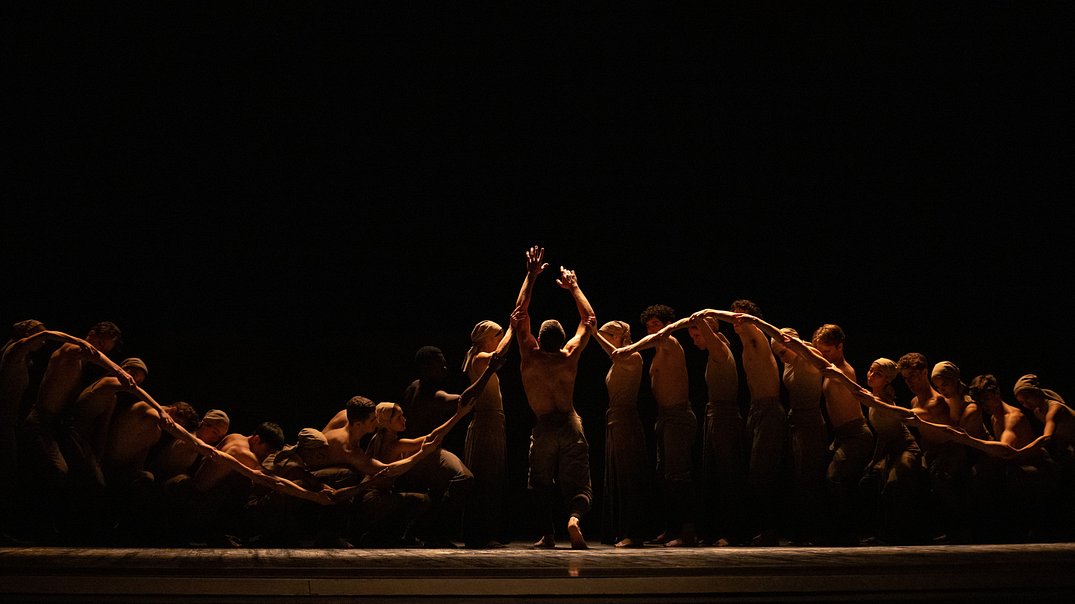Chroma is what I assume happens in a ballet dancer’s apartment when they wake up: A White Stripes song comes on. Everyone is in matching nude cami sleepwear, and without a word between them, the dancing begins.
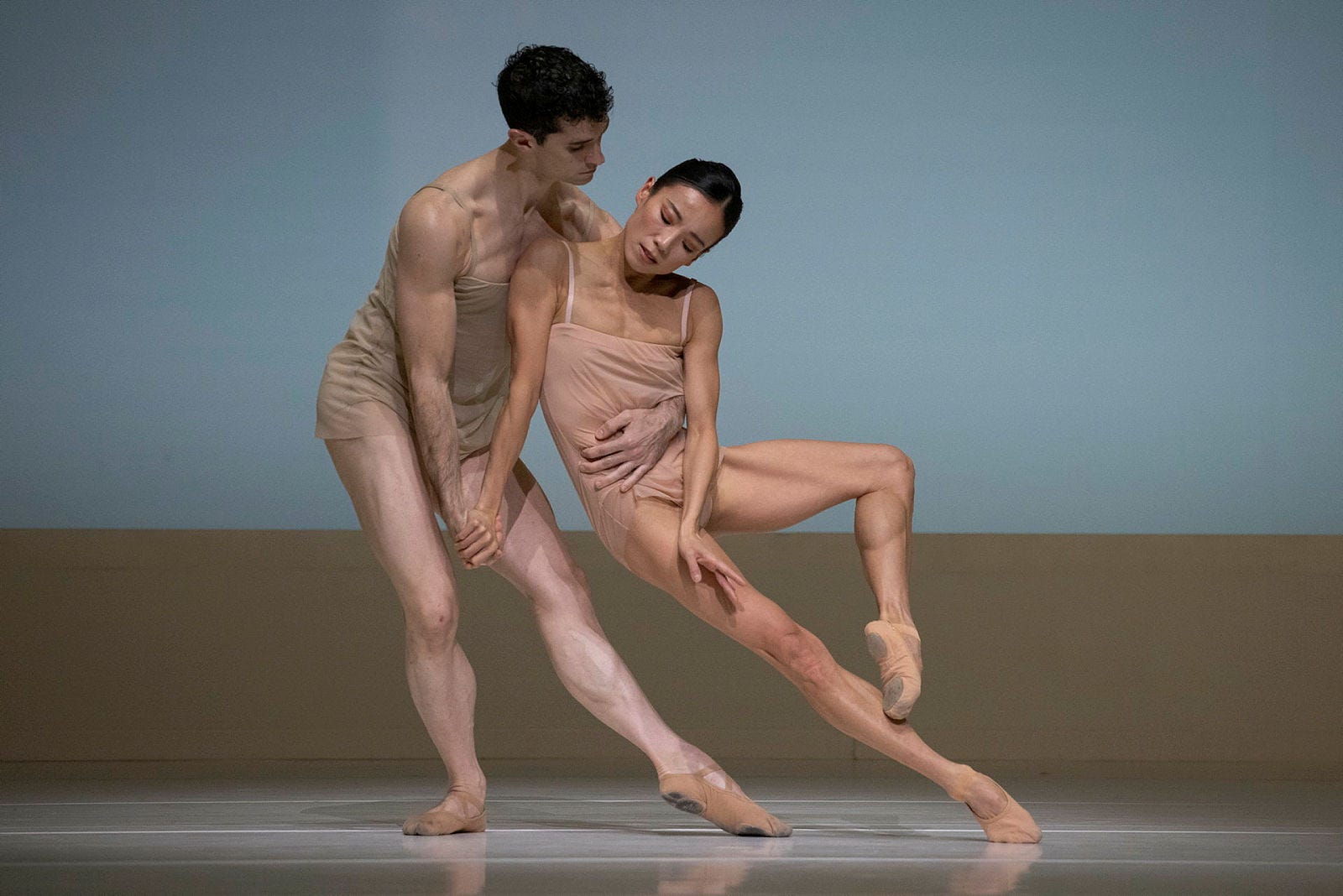

Most nights at the ballet pull me into a story—love, despair, or a very stressed-out bird; But Chroma wasn’t here to spin a tale. Modern dances command our attention because they give us something new to consider, but admittedly, this one took a few beats to land. I leaned back and asked a stranger if she knew the plot.
“Sometimes there is no story,” she said, adding that she once danced ballet in Hong Kong. “But I often held a narrative in my heart — that’s what guided my movement.”
My heart said this was Bad Romance meets 2001: A Space Odyssey. The kind of ballet that plays with shadow like it’s a dance partner, bodies swallowed and revealed by stark walls of color. It carried the cold elegance of a sci-fi utopia alongside the relentless energy of a pop music video.
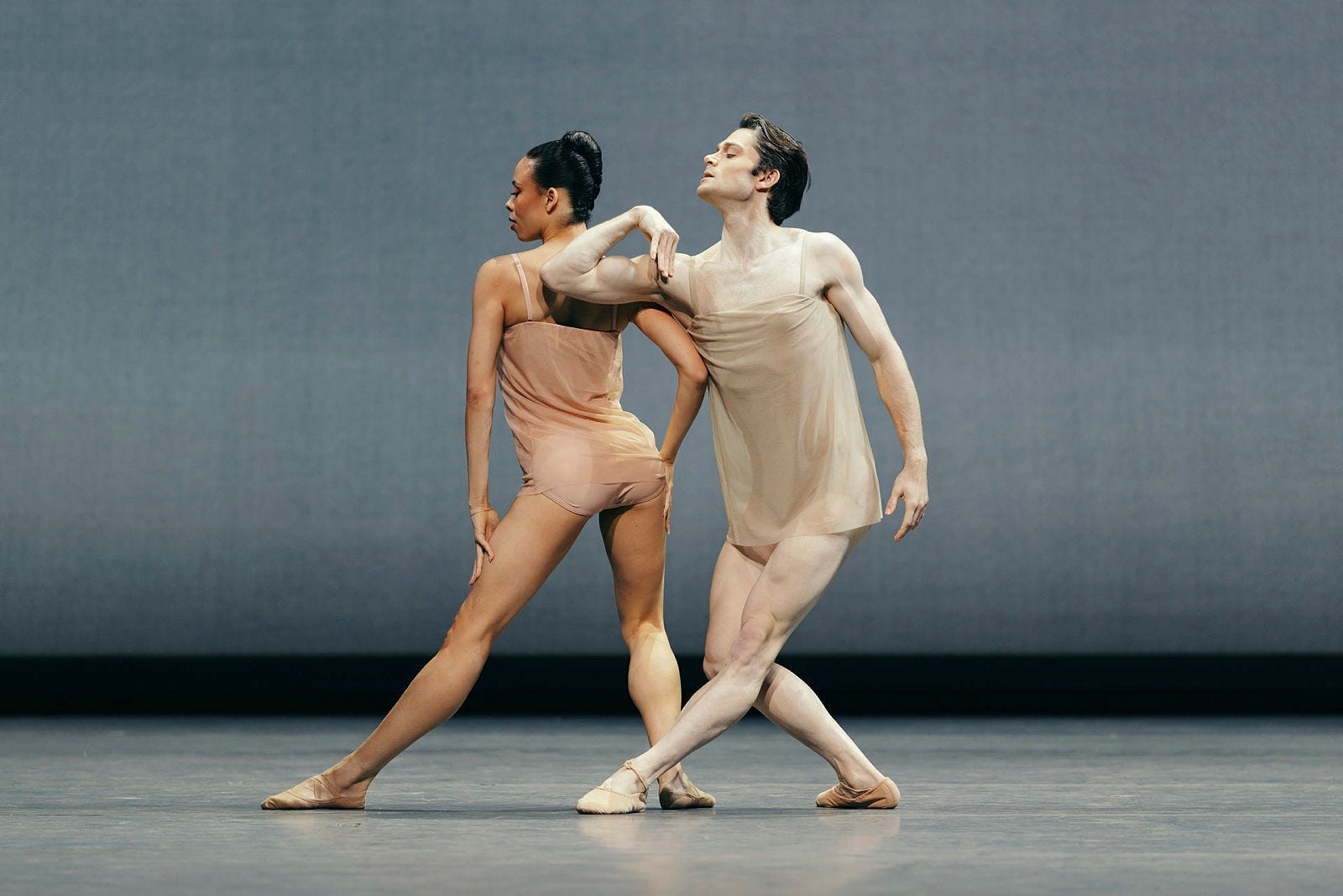
Chroma came packaged with Cool Britannia, a trio of ballets by British choreographers who deconstruct the mechanics of dance, then reimagine them. At SF Ballet’s opening night last week, I learned how Sir Wayne McGregor’s choreography stretched ballet’s physical limits while riding the jagged rhythms of The White Stripes.
But what caught me most was the joy. The moment Nikisha Fogo broke into a smile, I found myself dancing too. Likewise, a pas de trois with Victor Prigent, Archie Sullivan, and Esteban Hernández felt, and I’ll just say it: really gay to me, in the best way. I remember seeing only subtle nods to queerness on the War Memorial stage not long ago. On Feb. 13, however, this trio moved with a chemistry that felt effortless and unapologetic — and Sullivan in particular carried a glow that was truly infectious.
Within the Golden Hour
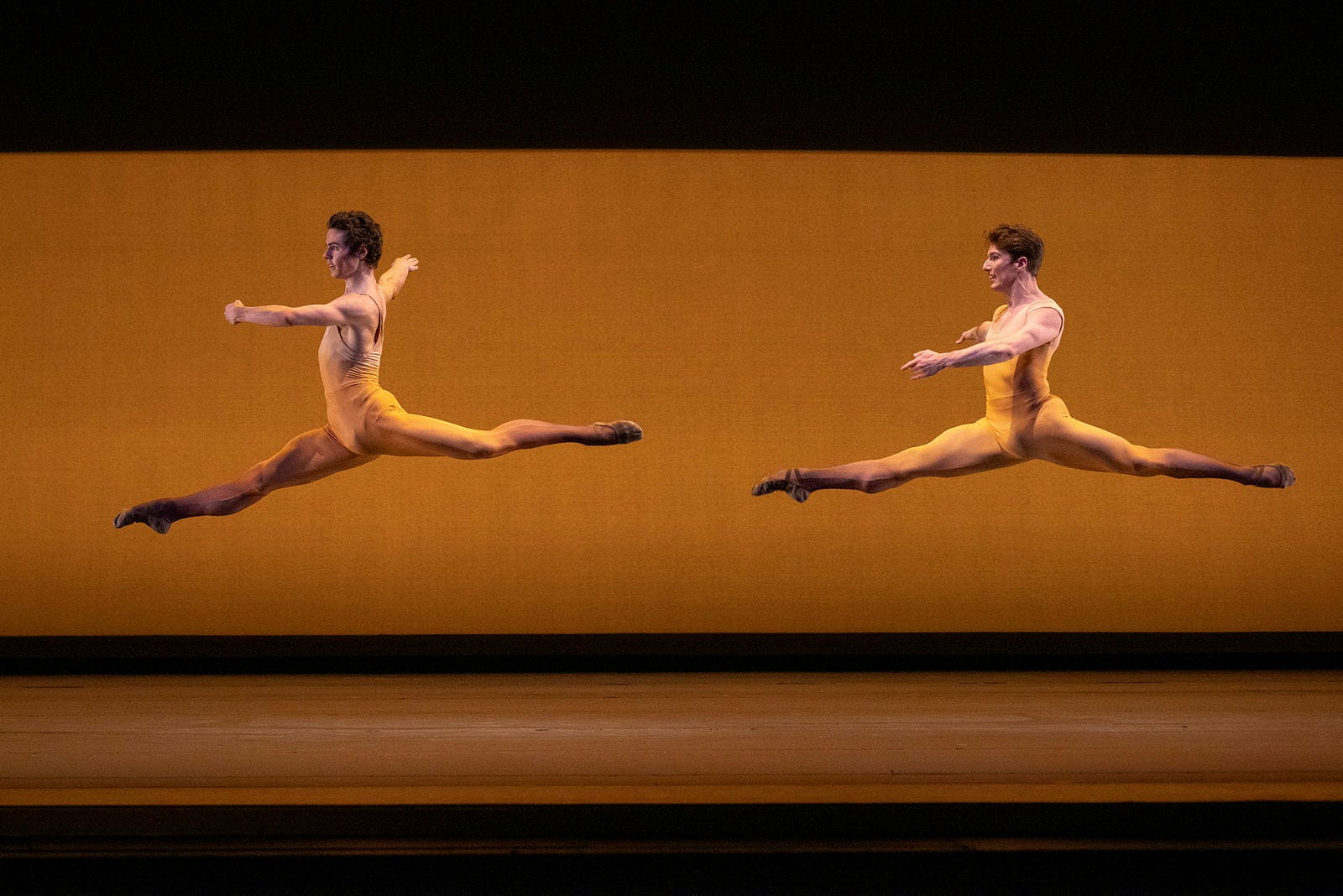

The night’s sophomore act featured new Zac Posen designs so contoured, they could have been tattoos. Form-fitting ombre leotards turned Within the Golden Hour into a boutique fitness class where you pay $500 to stretch attractively under romantic lighting.
The choreography by Christopher Wheeldon was pure sensation, like slipping into a warm bath with a glass of wine, but you know: really athletic. SF Ballet first brought this to life 16 years ago, moving dancers through duets, trios, and ensemble formations with a hypnotic flow.
I didn’t write many notes here because I was distracted by a future of fashion that felt aggressively snug, but don’t mistake me — it was clearly gorgeous. My scribbles included, “Naked ombre swimsuits??” and “red backdrop, black shadow silhouettes dance: Stunning.”
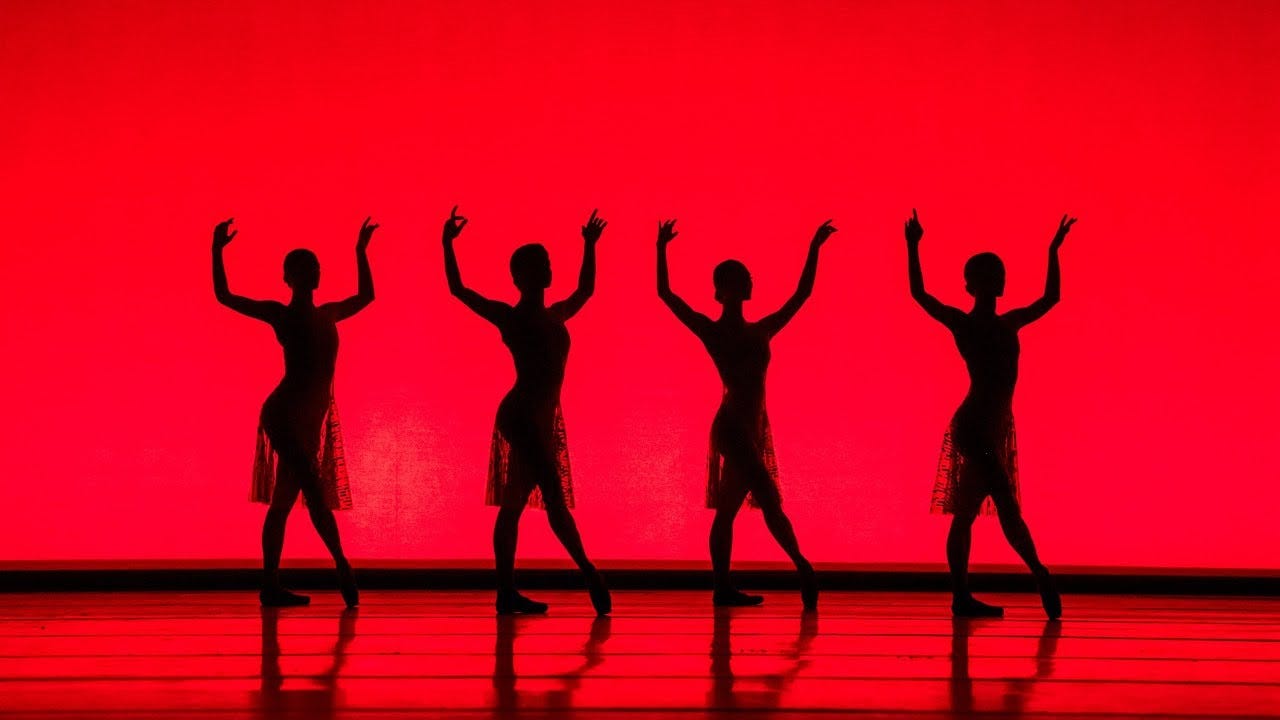
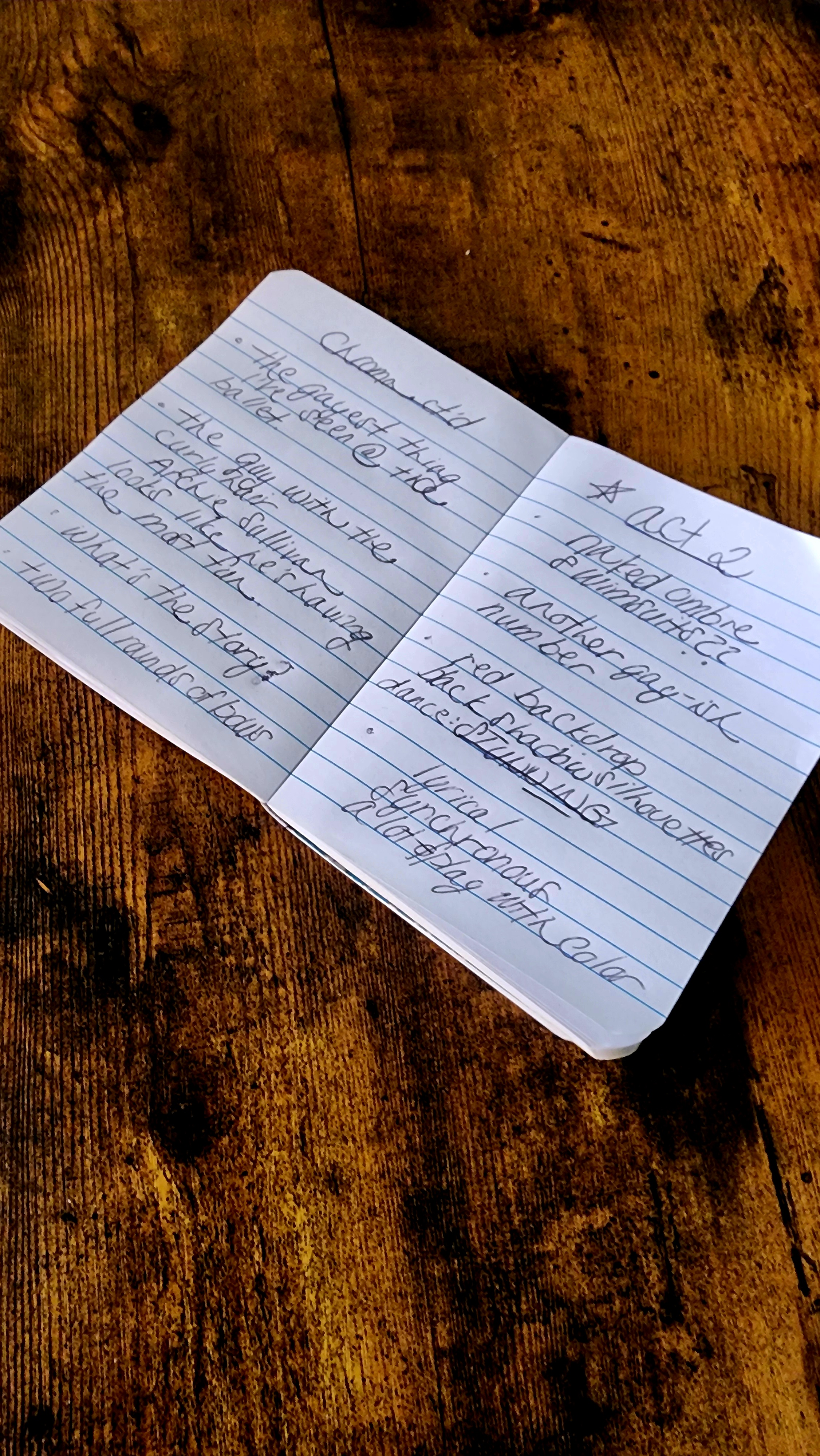
Dust
The final act evoked memorable scrawls, too. With the heavy World War undertones in Dust, I first imagined the corps as dancing ninja workers in Dune.
The choreographed work by Akram Khan belonged in a reality where survival was a daily negotiation. This landed undeniably as the most thought-provoking and emotional ballet of the night. If I highlighted just one moment from my entire experience, it’s this —

Listen I have been to Cirque du Soleil. I’ve seen bodies fold and stack — including my own double-jointed knees and elbows. I have never witnessed something so sculptural, so devastating, or so hauntingly unified. It looked like an army of bodies melting into a fractured wave.
SF Ballet, I know you’re reading: Take your flowers. Post your stories. Congratulate each other. It’s one of the most unforgettable tableaus I’ve ever seen onstage — and may ever see.
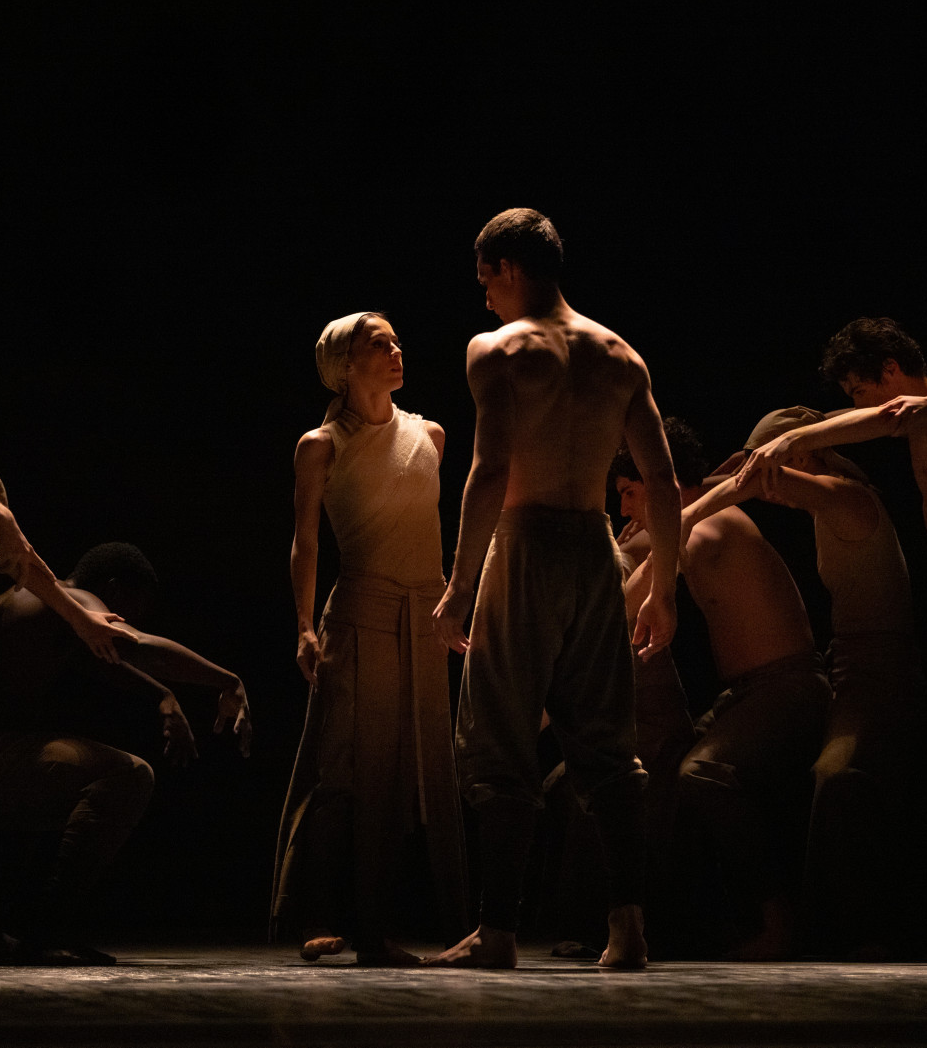

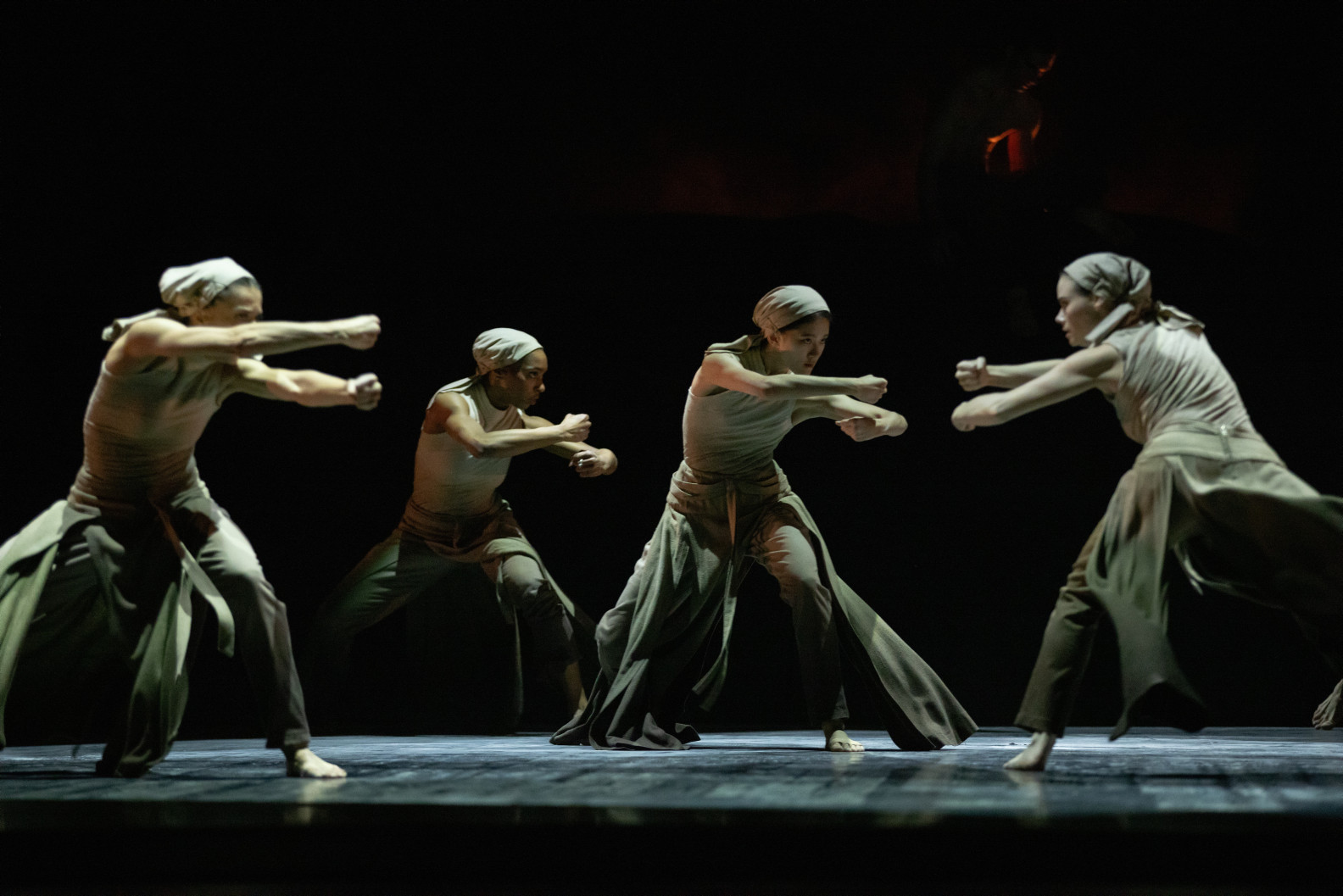
Dust originally debuted in 2014 by the English National Ballet as part of a World War I program. In it, we witness the unseen labor of war — the workers, the soldiers, the ones left behind in the trenches.
I expect that some walked away seeing reflections of current Middle Eastern conflicts, which might be the point. The devastation of war is part of our collective history, and depictions like Dust naturally resonate with present-day crises. It also made it hard to talk or write about.
Last year I decided to like challenging emotions that come from art — so SF Ballet succeeded in that way. But I’m also among some liberal Americans with my head in the sand, and this performance snapped me back to reality in profound and unsettling ways.



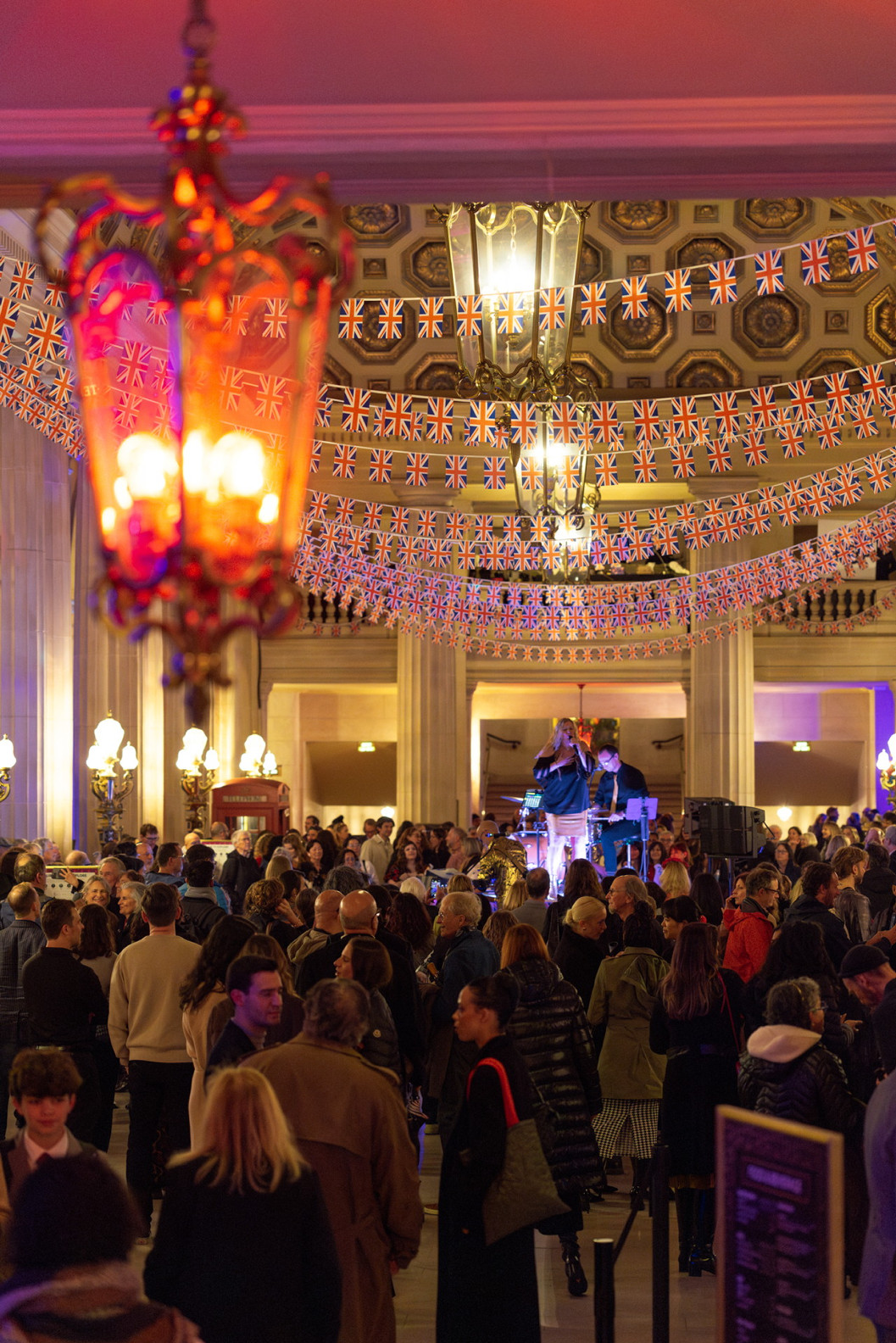
There’s something about the spell that theaters like the War Memorial cast on me as a kid — the hush, the curtain, the instant transport to another world. Nowadays our dopamine-fried brains want more, to which SF Ballet looked around and said: hell yes.
Its after party Thursday washed the lobby in British colors, from tiny flags to colored lights. Live cover songs by Jane Blonde and the Goldfingers kept me dancing like a derp in a glitter polka dot maxi skirt. Did the crowd vibe as hard as the Mere Mortals revelry? Like the current namesake show: We kept it cool. I loved meet-cutes with familiar faces, the gossip, swapping glances with friends and frenemies of the press corps, shaking my butt — and absorbing the kind of effortless glamor that only happens in good lighting and a room full of ballet dancers.
// Cool Britannia runs from February 13 through February 19 at the War Memorial Opera House — with tickets beginning at $35. Learn more.
Saul Sugarman is editor in chief of The Bold Italic.
The Bold Italic is a non-profit media organization, and we publish first-person perspectives about San Francisco and the Bay Area. Donate to us today.



